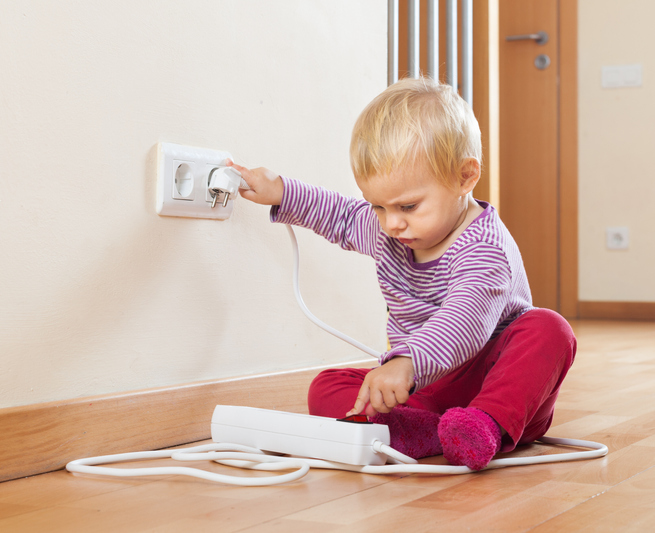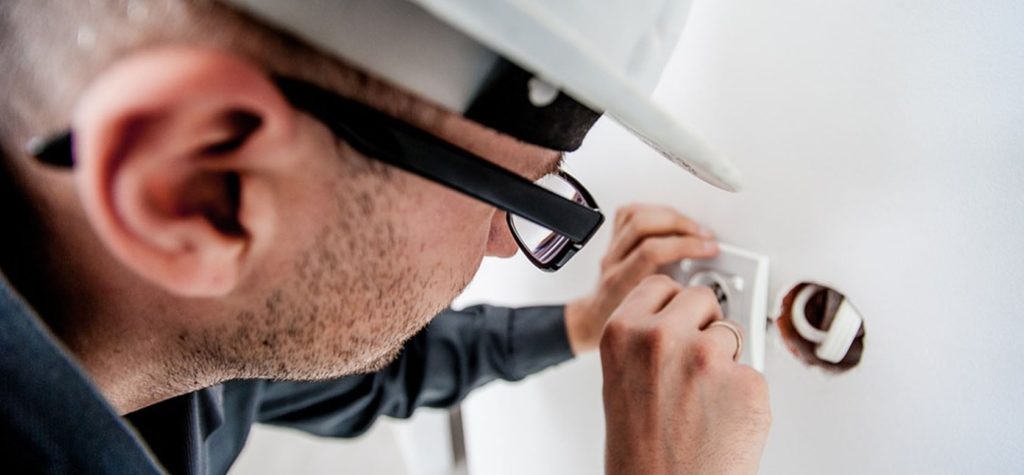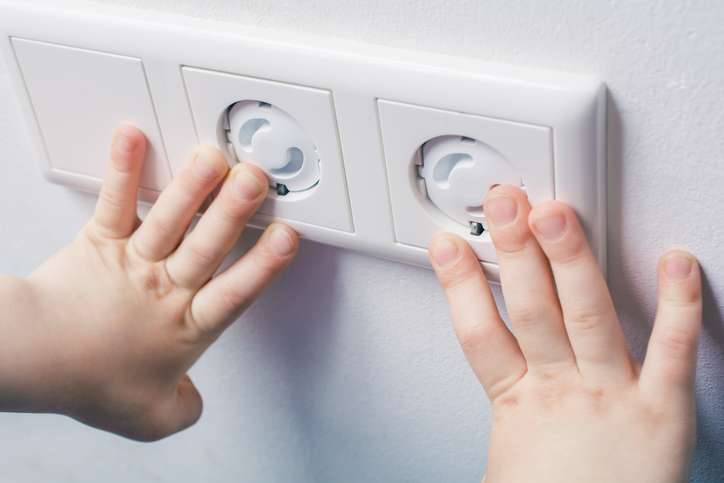The potential hazards and accidents related to electricity can be devastating, causing harm to individuals and property alike. Understanding the significance of electrical safety and taking preventive measures is essential to safeguard ourselves and our loved ones from such dangers.

Globally, it was found that there are nearly 1.2 million electrical injuries that occur each year, with around 350,000 injuries occurring in the household, and 70 deaths occurring last year alone. Faulty wiring, overloaded circuits, and other electrical issues can lead to fires, electrocutions, and various accidents that are largely preventable. To mitigate these risks, be aware of potential hazards and implement safety measures to ensure the safe use of electricity at home.
Electrical hazards and accidents at home can be prevented by identifying potential risks, ensuring proper electrical installations, and adopting safety practices to create a secure living environment. By understanding and implementing these safety measures, homeowners can significantly reduce the likelihood of electrical accidents and promote the well-being of their families.
Identifying and Preventing Electrical Hazards
Safe electrical practices begin with understanding how to identify the main electrical hazards that pose risk in one’s home, the main causes of electrical accidents in residential settings, why regular electrical inspections should be conducted and what to check, the risks of faulty electrical wiring, and why substandard electrical products increase the risk of hazards. With this knowledge, you can ensure the safety of your home.
Identifying Potential Electrical Hazards
Being aware of potential electrical hazards and preventing accidents can be achieved by identifying frayed or damaged electrical cords, outlets or switches that feel hot to the touch, and flickering lights. A burning smell or sparks coming from an appliance or outlet are also warning signs of potential hazards.
Main Causes of Electrical Accidents in Homes
Electrical accidents are commonly caused by overloaded circuits, using damaged electrical appliances or cords, and faulty wiring. Homeowners should avoid plugging too many devices into a single outlet or using extension cords as a permanent solution. Additionally, running electrical cords under carpets or rugs can lead to overheating and fire hazards.
The Importance of Regular Electrical Inspections
Periodic electrical inspections by a licensed electrician should be scheduled regularly to maintain a safe electrical system. These inspections should cover the main electrical panel, outlets, switches, and all visible wiring. An electrician will identify any outdated or faulty wiring, ensure proper grounding, and recommend necessary upgrades or repairs.
Risks of Outdated or Faulty Wiring
Outdated wiring, commonly found in older homes, can be a serious hazard. Upgrading to modern, code-compliant wiring will improve safety and reduce the risk of electrical fires. If you suspect faulty wiring or experience frequent electrical issues, it’s essential to seek professional assistance promptly.
Dangers of Substandard Electrical Products
Counterfeit electrical products are often sold at lower prices and can be not only dangerous but unreliable. They may not meet safety standards, leading to malfunctions, fires, or electrical shocks. To avoid such risks, purchase electrical products from reputable stores and verified manufacturers, ensuring they carry safety certifications like UL (Underwriters Laboratories) or CSA (Canadian Standards Association).
Familiarizing themselves with potential hazards, conducting regular inspections, and avoiding counterfeit products allows homeowners to take proactive steps to prevent electrical accidents and maintain a safe living environment.
Ensuring Safe Electrical Installations and Usage
In assessing your electrical usage, there are many factors to consider to decrease the risk of accidents. For instance, homeowners should consider the importance of grounding electrical systems and its importance in preventing accidents, how to childproof electrical outlets and appliances, know safety precautions for the outdoors, understand the hazards among electricity and water, as well as how to safely handle different appliances.
Grounding Electrical Systems
Grounding is a safety feature that diverts excess electrical energy away from appliances and into the ground. It prevents electrical shocks and reduces the risk of fires caused by electrical surges. To ensure proper grounding, hire a licensed electrician to inspect and update your home’s electrical system if necessary. Investing in high-quality grounding products from reputable brands like Eaton or Leviton can further enhance safety.
Childproofing Electrical Outlets and Appliances
Children are naturally curious and may unknowingly insert objects into electrical outlets or touch live electrical parts. Utilizing outlet covers or safety plugs helps to childproof electrical outlets and reduce potential hazards. Moreover, appliance safety locks can prevent children from accidentally turning on hazardous equipment, such as stoves or ovens.
Safety Precautions When Using Electrical Equipment Outdoors
When using electrical equipment outdoors, always prioritize safety by ensuring that all outdoor outlets are weatherproof and protected from the elements. Use outdoor extension cords specifically designed for outdoor use, such as the Coleman Cable Outdoor Extension Cord, to prevent damage and potential electrical hazards.
Preventing Electrical Shocks and Hazards Related to Water and Electricity
Water and electricity do not mix well and can pose significant hazards. To prevent electrical shocks, avoid using electrical appliances near water sources, such as sinks or bathtubs. Install Ground Fault Circuit Interrupters (GFCIs) in areas where water and electricity are in close proximity, such as bathrooms and kitchens, to quickly cut off power in case of a ground fault.
Safely Handling Extension Cords, Power Strips, and Batteries
Using extension cords and power strips properly by never overloading them with too many devices, as it can lead to overheating and potential fires. Opt for high-quality extension cords like the AmazonBasics Extension Cord that have built-in safety features. Additionally, when handling batteries, follow the manufacturer’s instructions and avoid mixing old and new batteries in the same device.
Adhering to these safety practices allows homeowners to create a safer environment and minimize the risk of electrical accidents in their homes. Being cautious and investing in reliable electrical products are essential steps in ensuring electrical safety.
Electrical Fire Prevention
Accidents can happen when electrical equipment is not properly used. However, you can decrease the chances of electrical fires by having smoke detectors and carbon monoxide alarms, implying safety measures when using tools in home, and being aware of safety measures to take with in house heaters and electrical appliances.
Tips to Prevent Electrical Fires at Home
Preventing electrical fires can be achieved by avoiding overloading electrical outlets and circuits by plugging in too many devices. Use power strips with surge protectors, such as the Belkin 12-Outlet Power Strip Surge Protector, to safeguard against power surges. Regularly inspect electrical cords for damage or wear and replace them promptly if needed. Keep flammable materials away from electrical appliances and outlets to reduce fire risks.
Importance of Smoke Detectors and Carbon Monoxide Alarms
Smoke detectors and carbon monoxide alarms are important in detecting fire or gas leaks. Install smoke detectors on every floor of your home, including inside sleeping areas. The First Alert Smoke Detector and Carbon Monoxide Alarm is a reliable option that provides both smoke and carbon monoxide detection. Test these alarms monthly, and change the batteries at least once a year to ensure they function correctly.
Safety Measures When Using Power Tools and Appliances in the Bathroom and Kitchen
Electrical appliances in the bathroom and kitchen require extra precautions. Keep these areas dry and avoid using electrical devices near water sources to prevent electric shocks. Install Ground Fault Circuit Interrupters (GFCIs) in these spaces to cut off power in case of electrical faults. Follow manufacturer’s instructions for power tool usage, and always unplug them when not in use. Additionally, opt for appliances with safety features like auto-shutoff to prevent accidents.
Precautions When Using Space Heaters and Electric Blankets
Space heaters and electric blankets can be hazardous if not used correctly. Choose space heaters with tip-over protection and automatic shut-off features, such as the Lasko Ceramic Space Heater. Place them on a level, non-flammable surface, and keep flammable materials at a safe distance. When using electric blankets, follow the manufacturer’s guidelines and avoid folding or tucking them in tightly to prevent overheating.
By implementing these fire prevention measures, homeowners can significantly reduce the risk of electrical fires and promote a safer living environment for themselves and their families. Staying proactive and informed about electrical safety is paramount in protecting both lives and property.
Emergency Response and First Aid
In response to electrical emergencies, there are various steps that should be taken and precautions to be aware of. Having an emergency plan and being prepared are very important in making sure you handle these situations to the best of your abilities.
Immediate Steps to Take in the Event of an Electrical Shock or Electrocution Accident
Electrical shocks can be dangerous and require prompt action. If someone receives an electrical shock, the first priority is to ensure the person’s safety. Do not touch them directly while they are still in contact with the electrical source. Turn off the power supply at the main circuit breaker, if possible, or use a non-conductive object, like a dry wooden stick, to separate the person from the electrical source. Call for emergency medical help immediately, as electrical shocks can cause internal injuries that may not be immediately apparent. Administer cardiopulmonary resuscitation (CPR) if the person is unresponsive and not breathing.
Creating an Emergency Plan for Electrical Accidents and Power Outages
Homeowners should have a well-thought-out emergency plan in case of electrical accidents or power outages. Ensure all family members know the location of the main circuit breaker and how to shut off the power supply in case of emergencies. Keep a fully charged emergency flashlight, like the Anker Bolder LC90 Rechargeable Flashlight, easily accessible in case of power outages. Create a designated meeting place outside the home where family members can gather safely during emergencies. Educate all family members on the emergency procedures, including what to do in case of electrical accidents, and regularly practice the plan to ensure everyone is familiar with the process.
Being prepared and knowing how to respond to electrical accidents and power outages allows homeowners to minimize potential risks and handle emergencies more effectively. Quick and appropriate actions can make a significant difference in ensuring the safety and well-being of everyone in the household.
Take Away
It is very important to be able to identify potential electrical hazards, ensure safe installations, and implement preventive measures in using electrical equipment. By conducting regular inspections, adhering to safety guidelines, and being proactive during emergencies, homeowners can create a safer living environment for themselves and their families. Take these safety measures seriously and prioritize electrical safety to protect your loved ones. Prevent electrical accidents and ensure your homes are secure and free from electrical hazards to ensure the safety of your family.




